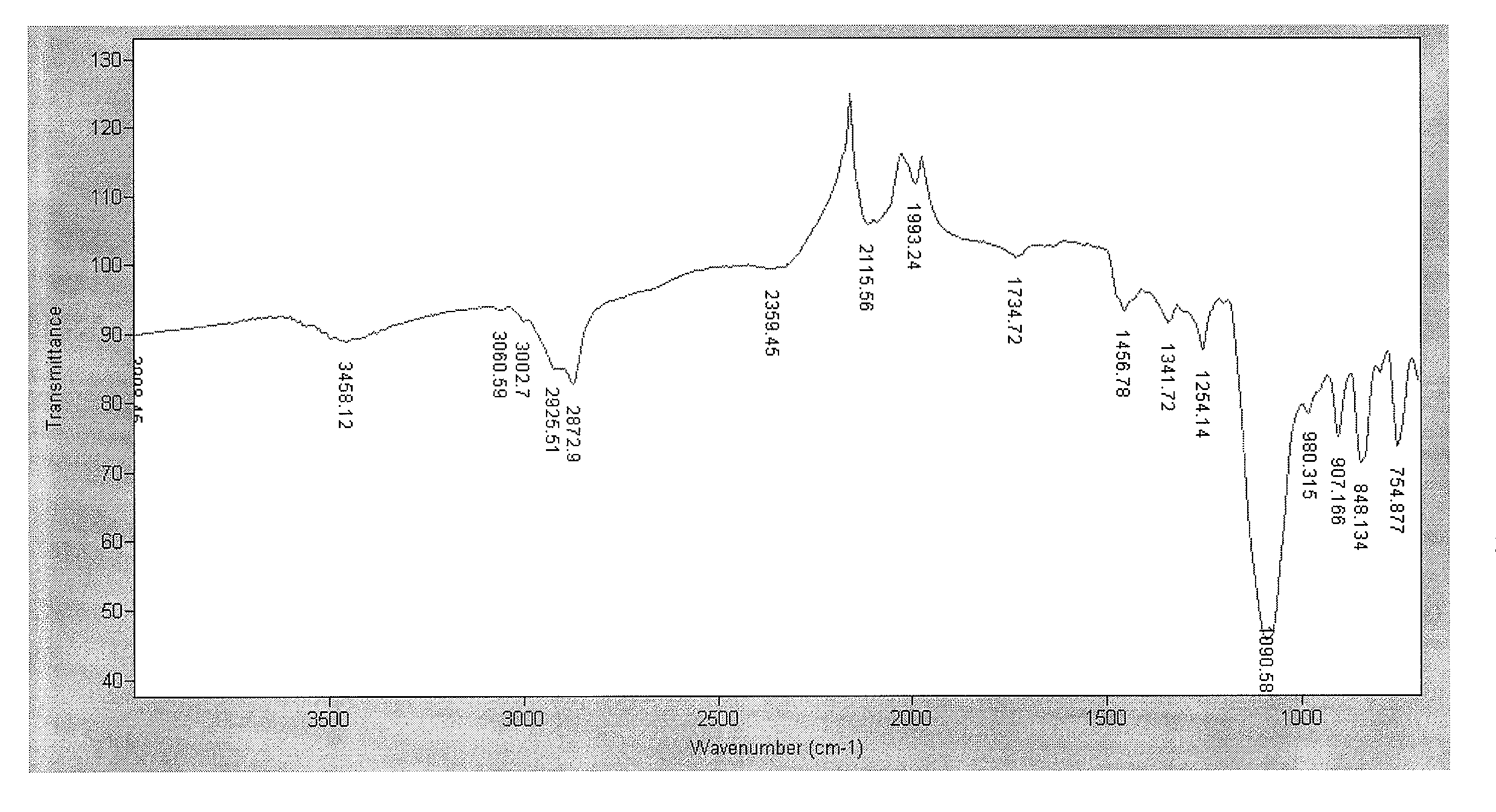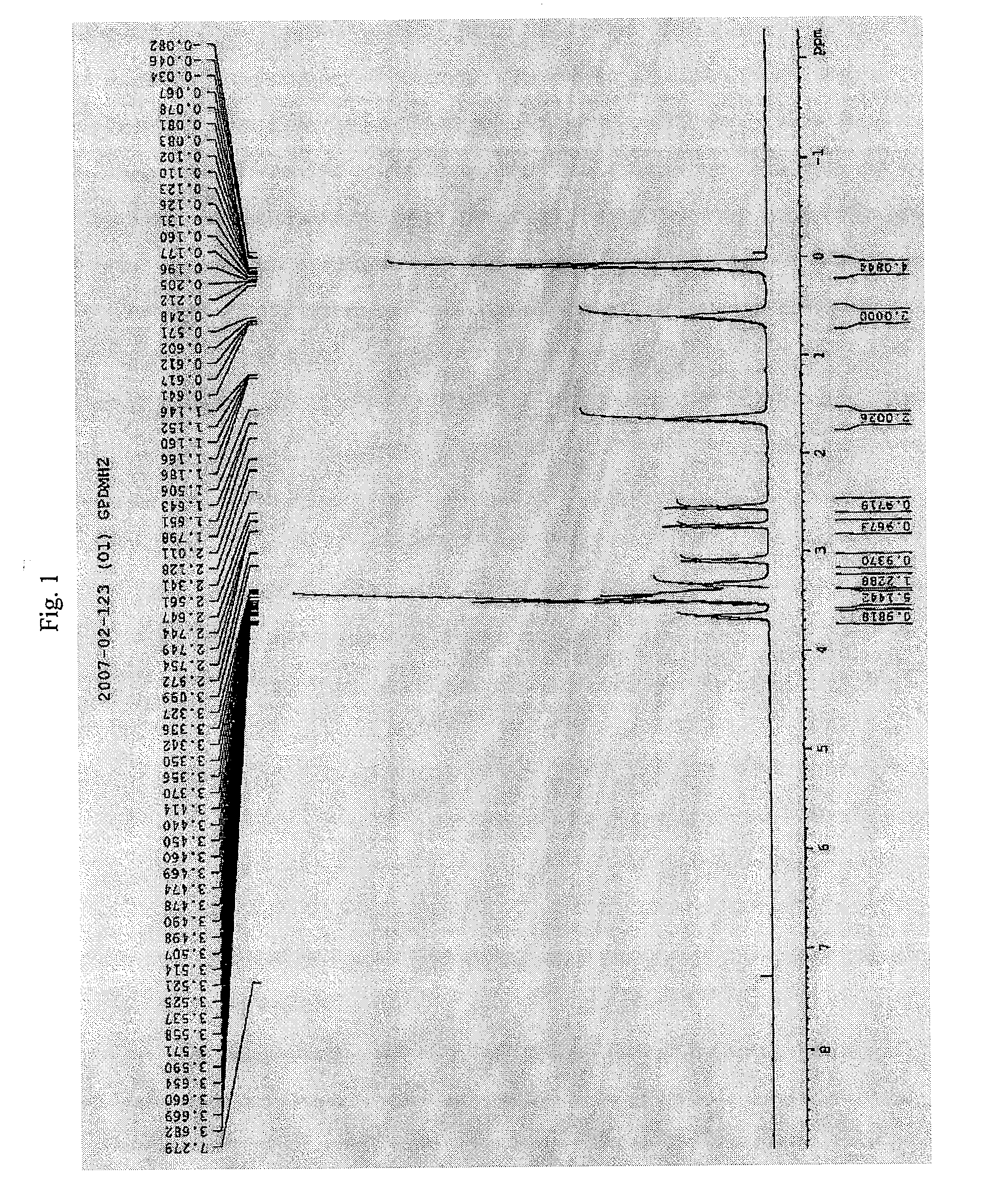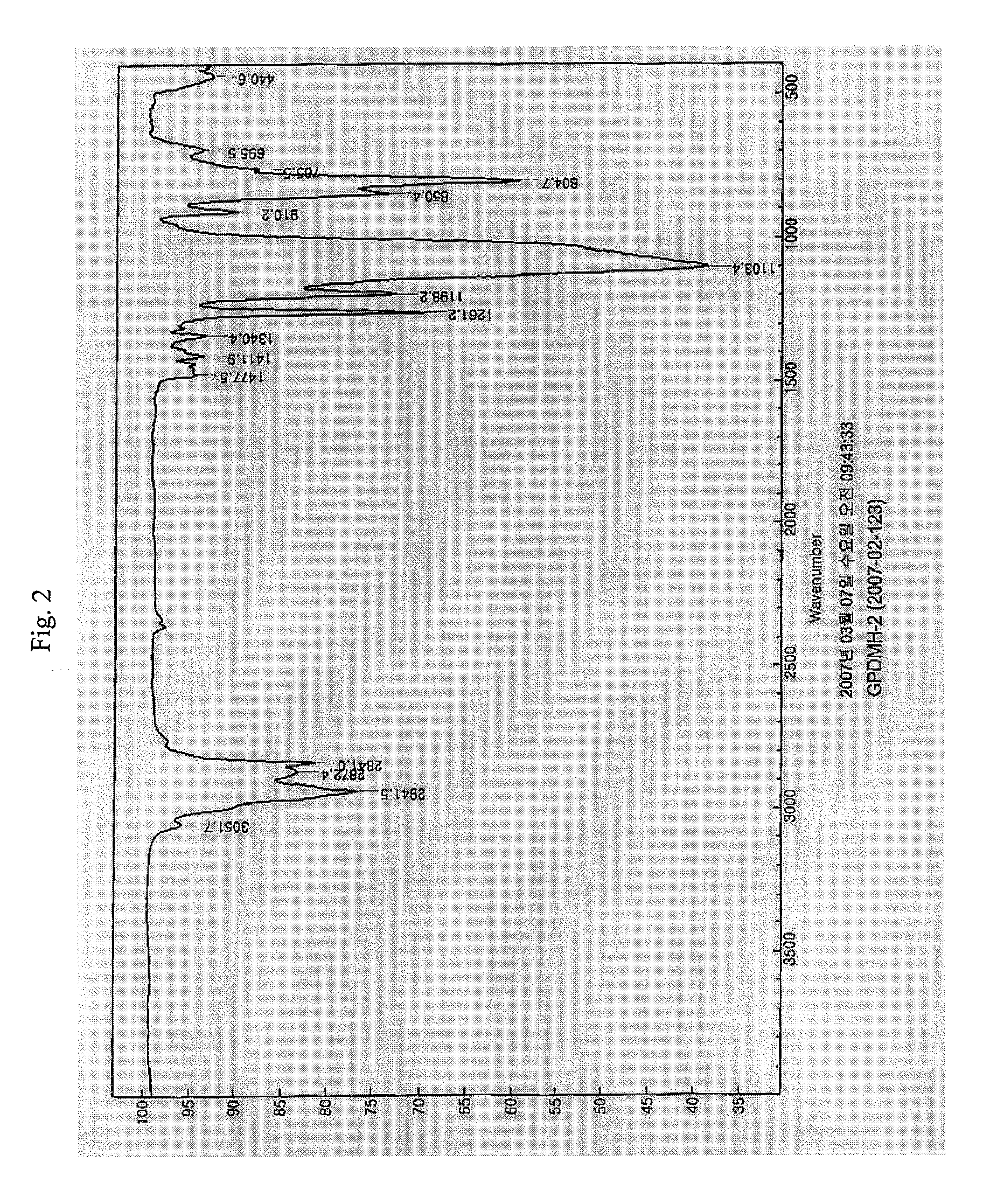Organic polysiloxane, adhesive composition comprising the same, and rubber stiffener treated thereby
- Summary
- Abstract
- Description
- Claims
- Application Information
AI Technical Summary
Benefits of technology
Problems solved by technology
Method used
Image
Examples
preparing example 1
[0090]500 mL of distilled water was introduced into a round 1 L 3-neck flask, and then 10 mL of 0.1M HCl solution was added therein and the solution was stirred at room temperature for 10 minutes. 139.2 mL (0.5 mol) of 3-glycidoxypropyltriethoxy silane and 50.5 mL (0.34 mol) of dimethylethoxy silane were introduced together into the stirred solution and the solution was stirred again with a stirrer at room temperature. The reaction was terminated after stirring for 5 hours, and the remaining HCl was rinsed with excess distilled water. 145 g of the milk-white material obtained therefrom was analyzed by a FT-IR spectrometer and a NMR spectrometer, and the NMR spectrum and the FT-IR spectrum are illustrated in FIG. 1 and FIG. 2.
preparing example 2
[0091]103.2 mL (0.5 mol) of 3-(2-aminoethylamino)propyl-dimethoxymethyl silane and 92.52 mL (1.0 mol) of epichlorohydrin were introduced together into a round 1 L 3-neck flask and then the solution was stirred with a stirrer at room temperature. The reaction was terminated after stirring for 3 hours, and 400 mL of distilled water and 37.2 mL (0.25 mol) of dimethyldiethoxy silane were introduced together therein, and then the solution was stirred again with a stirrer at room temperature. The reaction was terminated after stirring for 5 hours, and sodium hydroxide was introduced therein in order to eliminate the remaining HCl and then the organic polysiloxane was extracted by mixing ether therein. After distilling off the ether, 133 g of the light yellowish material obtained therefrom was analyzed by a FT-IR spectrometer and a NMR spectrometer, and the NMR spectrum and the FT-IR spectrum are illustrated in FIG. 3 and FIG. 4.
example 1
[0092]12.5 g of the organic polysiloxane obtained from Preparing Example 1 was introduced into 975.5 g of pure water and then the solution was stirred at room temperature. After introducing 12 g of a diisocyanate blocked with caprolactam therein and preparing an adhesive composition, the twisted polyethyleneterephthalate (PET) fiber (1500d / 384f) was dipped into the prepared adhesive composition. At this time, the tensile strength of the fiber was maintained to be 1.37 g / denier, and the speed of the dipped fiber passing through the adhesive composition was maintained to be 60 to 60 m / min. The fiber passed through the adhesive composition was dried and heat-treated, and then it was further dipped into a 20% RFL adhesive solution (second treating solution), dried at the temperature of 150° C., and stabilized at the temperature of 235° C. so as to prepare the dipped cord for reinforcing a tire.
PUM
| Property | Measurement | Unit |
|---|---|---|
| Percent by mass | aaaaa | aaaaa |
| Percent by mass | aaaaa | aaaaa |
| Percent by mass | aaaaa | aaaaa |
Abstract
Description
Claims
Application Information
 Login to View More
Login to View More - R&D Engineer
- R&D Manager
- IP Professional
- Industry Leading Data Capabilities
- Powerful AI technology
- Patent DNA Extraction
Browse by: Latest US Patents, China's latest patents, Technical Efficacy Thesaurus, Application Domain, Technology Topic, Popular Technical Reports.
© 2024 PatSnap. All rights reserved.Legal|Privacy policy|Modern Slavery Act Transparency Statement|Sitemap|About US| Contact US: help@patsnap.com










